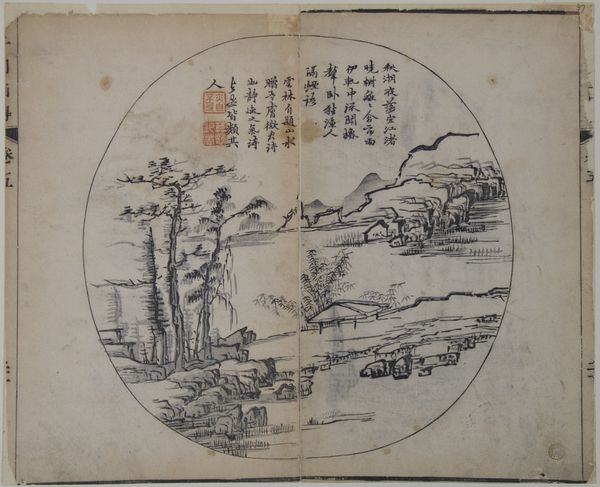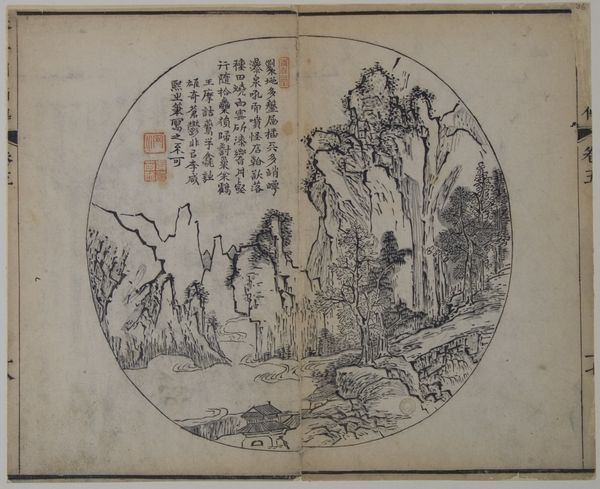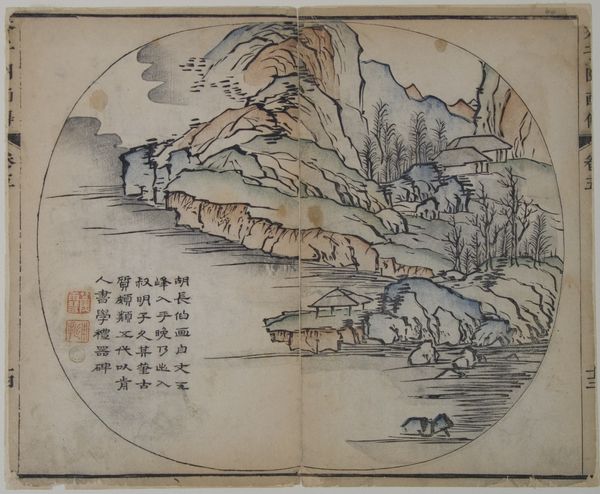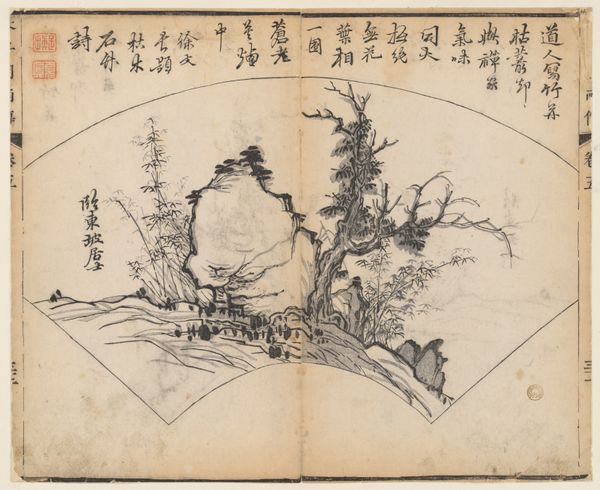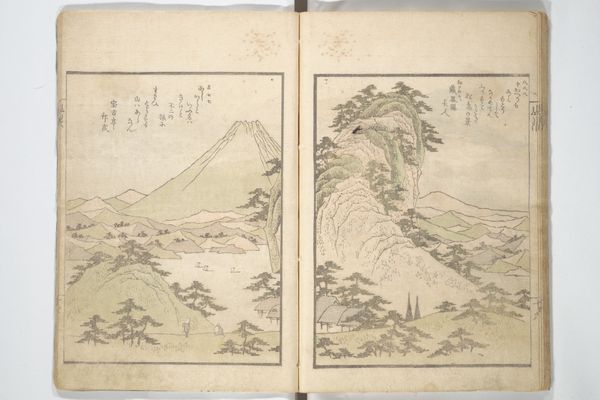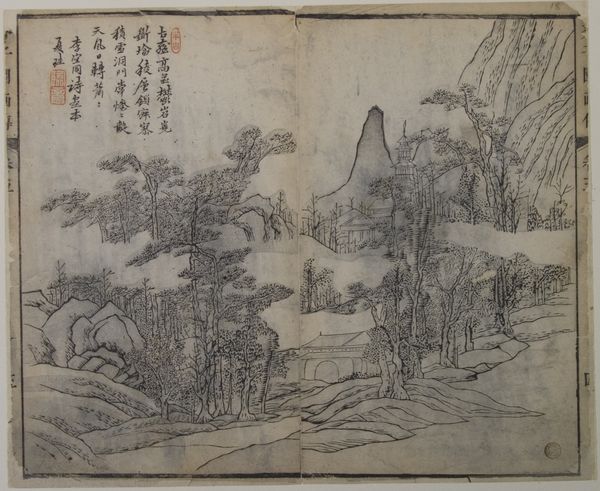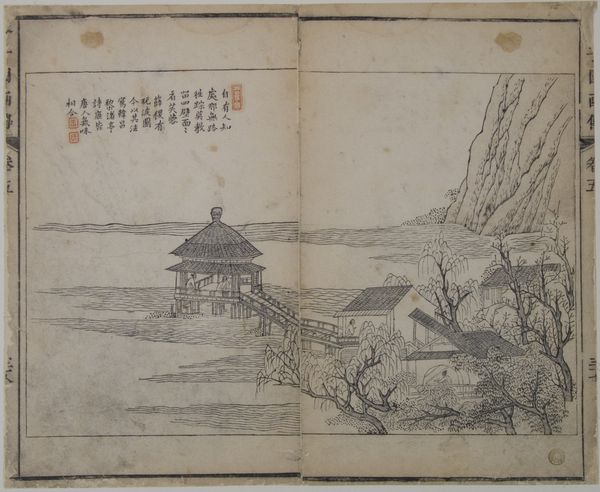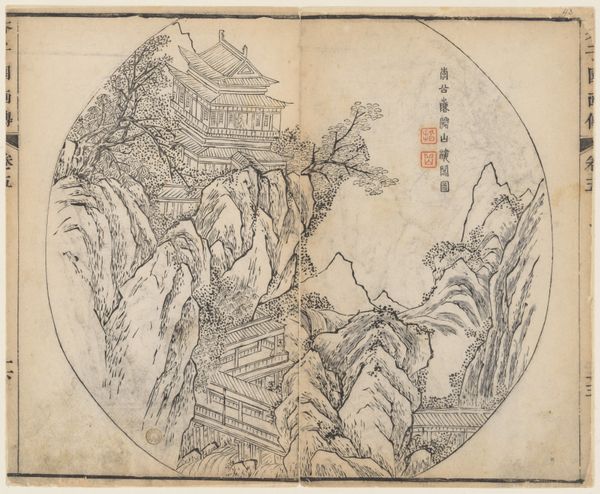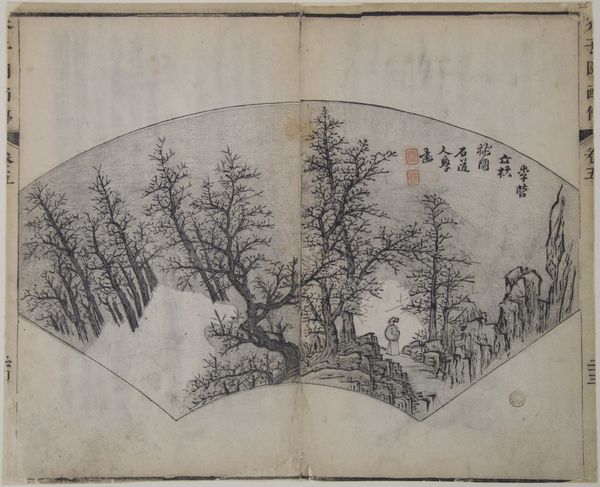
drawing, print, ink
#
drawing
# print
#
asian-art
#
landscape
#
ink
#
calligraphy
Dimensions: 9 5/8 x 11 13/16 in. (24.4 x 30 cm)
Copyright: Public Domain
Curator: Here we have a print titled "A Page from the Jie Zi Yuan." It's an ink drawing, with some calligraphy, and the piece can be found at the Metropolitan Museum of Art. Editor: It strikes me as almost dreamlike. The mountains rise dramatically, yet there's this soft, ethereal quality to the whole scene, encapsulated in a circle. Curator: The circle itself is symbolic, referencing wholeness and cosmic unity in traditional Asian art. It is by Mi Youren. Landscape depictions often serve as microcosms, reflections of a well-ordered society. Editor: I'm interested in who this "well-ordered" society served. Landscape art historically reinforced hierarchical power structures by emphasizing the ruler's dominion over nature, even reflecting on historical inequities in land ownership. Does this image speak to privilege or exploitation? Curator: The Jie Zi Yuan, or "Mustard Seed Garden Painting Manual", offered aspiring artists patterns and archetypes. Notice the flowing lines, the controlled washes of ink creating depth and atmosphere. The manual itself became a powerful vehicle for disseminating artistic knowledge. Editor: It also formalized certain perspectives and aesthetics. In whose image was artistic knowledge disseminated? This print, however technically beautiful, risks perpetuating dominant narratives about who gets to create, represent, and own both land and art. Curator: Fair points. But doesn’t it also democratize access to art education, offering techniques to a broader audience? The image evokes a sense of tranquility. A small boat hints at human presence amidst this grand vista. Editor: I agree that there's a strong emotional appeal. But that tranquility, I believe, can be misleading if we fail to address its historical and social implications. Visual harmony shouldn’t eclipse critical analysis of cultural memory, what has been omitted, even erased, from that sense of wholeness you described. Curator: It seems, this page serves as more than just aesthetic delight; it is also a window into our perception. Editor: Precisely. It pushes us to critically examine how representations shape—and often reshape—our understandings of landscape, culture, and the very power dynamics embedded in viewing the world.
Comments
No comments
Be the first to comment and join the conversation on the ultimate creative platform.


